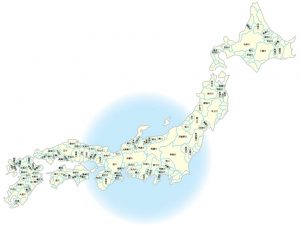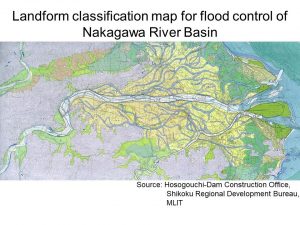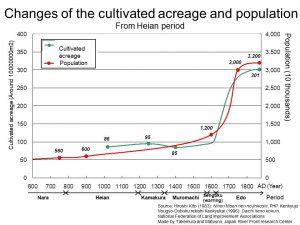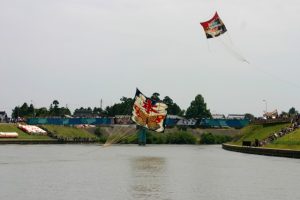━━━━━━━━━━━━━━━━━━━━━━━━━━━━━━━━━━━
【JWF News Vol. 182】People and Water: the Formation of Communities
18 December 2019
━━━━━━━━━━━━━━━━━━━━━━━━━━━━━━━━━━━
◇ Contents ◇
・Foreword People and Water: the Formation of Communities
・Report from the Japan Water Forum
– The participation in the Fifth meeting of the Roundtable on Financing Water
━━━━━━━━━━━━━━━━━━━━━━━━━━━━━━━━━━━
・Foreword People and Water: the Formation of Communities
By Kotaro Takemura, Chair of Japan Water Forum
━━━━━━━━━━━━━━━━━━━━━━━━━━━━━━━━━━━
On October 12, 2019, major typhoon Hagibis (No.19) swept through the southern Tohoku district of Japan. In more than 70 locations on more than 50 rivers, riverbanks were breached, leaving unprecedented damage in the Tokyo metropolitan area and the Tohoku district. Every time we suffer damage caused by flooding, I think of the national territory of Japan and its process of development. History informs those of us living today about our future.
The 250-year Edo Period, Dedicated to Basin Development
In 1600, Ieyasu Tokugawa became Seii Taishogun, literally “great general who subdues barbarians”, after winning the Battle of Sekigahara. In 1603, he established the Edo feudal government. Ieyasu Tokugawa devised an ingenious way of controlling the more than 200 warring daimyos (feudal lords): he exploited the topography of the Japanese archipelago.
The Japanese archipelago is divided by straits and mountains. Numerous rivers flow down from the mountains that form the country’s backbone. The Japanese islands are divided into river basins. Ieyasu tried to confine each daimyo to a basin.
During the earlier warring period, feudal lords had scrambled to occupy land beyond the rim of their basins. However, during the Edo period, they were not allowed to expand their territory beyond these boundaries. Figure 1 shows a map of the Japanese archipelago divided into basins.
 |
| Figure 1 |
Before the warring period, rivers throughout Japan were seen as rampaging torrents that repeatedly caused flooding. Particularly in its lower reaches, a river would branch out from the main stream into many smaller streams, like Yamata-no-Orochi, a mythical giant snake with eight heads, and form an alluvial plain through which it meandered. The alluvial plains, where sea water and fresh water converged, were barren wetlands.
The daimyo, confined to their river basins, cooperated with local residents to develop the basins rather than expanding their territory. People worked together to build embankments in the wetlands. Eventually, they would succeed in controlling the rampaging rivers by confining them into narrow areas.
Development of Land in the Edo Period
The purpose of confining diverging and meandering rivers in narrow channels was clear: to change barren wetlands into rich farmland. Figure 2 shows a plain view of the Nakagawa River, a first-class river in Tokushima prefecture. The two bold lines in the center show the banks of today’s Nakagawa River. The numerous thin lines surrounding these show old river channels which used to flow in various directions. Though we are no longer able to see them, the snake-like old river channels, without doubt, lie under the ground.
 |
| Figure 2 |
This is true not only in the case of the Nakagawa River. In the Edo period, such embankments were constructed on many alluvial plains throughout Japan, and the violent, diverging rivers were confined into narrow areas.
Due to the development of river basins in the Edo period, the amount of arable land increased rapidly. Along with the resulting rapid increase of rice yields across Japan, the population grew drastically from 10 to 30 million. Figure 3 shows this trend. Figure 3 also shows that the cultivated acreage in Japan remained constant from the Heian through the Kamakura, Muromachi and Sengoku (warring) periods. However, it rapidly increased in the Edo period. The population, forced to live within the confines of river basins, concentrated their efforts on constructing embankments and developing arable land.
 |
| (図―3) |
The Battle in the Basin in a Peaceful Period: Establishing Strong Communities
99.9% of the riverbanks in Japan were constructed in the Edo period. The Japanese land took shape during these peaceful 250 years, enabling the people to accumulate wealth.
Though new land had been acquired through basin development, the Yamata-no-Orochi-like old river-channels which lay underground remained quite dangerous. When water levels rose due to flooding, water could gush out from the ground anywhere along the embankments. This caused soil erosion and inevitably triggered the breaching of embankments.
Thus, the fight to protect wealth began. This was a battle to protect arable land and housing from flooding. It was also a battle against the old river channels sleeping underground. Even in the peaceful Edo period, the Japanese people were not able to escape the fight against flooding. To win this fight, policymakers installed ingenuous devices on riverbanks.
Traditional Manner of Protecting Riverbanks
Shrines dedicated to the guardian deities of local villages were erected on riverbanks. From time to time, people would visit their shrine. In doing so, they would walk on the riverbank, packing down the soil. There are still various shrines built on riverbanks, such as Chisui Shrine on the Nagaragawa River, Anamori Shrine on the left bank of the Tamagawa River and Fukuzawa Shrine on the Sakawagawa River.
Not only did villagers build shrines, they also gathered on the riverbanks to hold various festivals. At giant kite-flying events in Niigata and Saitama, and a festival on the Chikugo River in Kyushu, people ran and walked back and forth along the riverbanks. Picture 1 depicts a kite-flying event held on a riverbank.
 |
|
Picture 1 |
During New Year’s visits to shrines, cherry-blossom viewing in spring, fireworks in summer and festivals in autumn, people trooped along the paths atop the riverbanks. They enjoyed the festivals while treading down the embankments, thus protecting their lives. Along the riverbanks, people had their first crush, married, and walked hand-in-hand with their children. They retained pleasant memories of festivals in their communities, which fostered a collective identity among locals.
We become conscious of a sense of community in the face of an enemy. In the peaceful Edo period, the enemy was flooding. The Japanese people fought to protect riverbanks, held festivals on the embankments, and forged an identity within local communities.
━━━━━━━━━━━━━━━━━━━━━━━━━━━━━━━━━━━
・Report from the Japan Water Forum
━━━━━━━━━━━━━━━━━━━━━━━━━━━━━━━━━━━
– The participation in the Fifth meeting of the Roundtable on Financing Water
JWF participated in the fifth meeting of the Roundtable on Financing Water held in the headquarter of the Asian Development Bank (ADB), located in Manila, Philippines, on 26-27 November 2019.
The Roundtable on Financing Water is a global public and private platform on the global scale to promote action to scale up financing for water. It has been jointly established by the Organisation for Economic Co-operation and Development (OECD), the Government of the Netherlands, the World Water Council and the World Bank. It conducts open dialogue and exchange opinions between key actors in the water and finance sectors about the need and priorities to ensure adequate financing for water and the opportunity for investment for water infrastructure, which is required for the enhancement of attaining water security and the Sustainable Development Goals (SDGs). This was the fourth roundtable to be organized since the first roundtable was held back in April 2017.
▼Please visit the following website for details▼
https://www.waterforum.jp/all/policy_recommendations/apws/2019/1218/?p=12696tag=en,rep_en
(Reported by Manager, Yumiko Asayama)
━━━━━━━━━━━━━━━━━━━━━━━━━━━━━━━━━━━
▼JWF News Archives▼
https://www.waterforum.jp/all/newsletter?tag=en,rep_en
If you wish to post information on our bulletin board, or should you prefer not to receive further JWF News, please contact us.
You can also get in touch regarding subscribing, changes of address, or any other comments or requests.
■━━━━━━━━━━━━━━━━━━━━━━━━━━━━━━━━━■
JWF News Vol. 182 / 18 December 2019
Japan Water Forum
6th fl., 5-4 Nihonbashi-Hakozaki-cho, Chuo-ku, Tokyo, 103-0015
TEL: 03-5645-8040 FAX: 03-5645-8041
E-mail: news[at]waterforum.jp URL: https://www.waterforum.jp/en/
※Please change [at] to @
■━━━━━━━━━━━━━━━━━━━━━━━━━━━━━━━━━■
